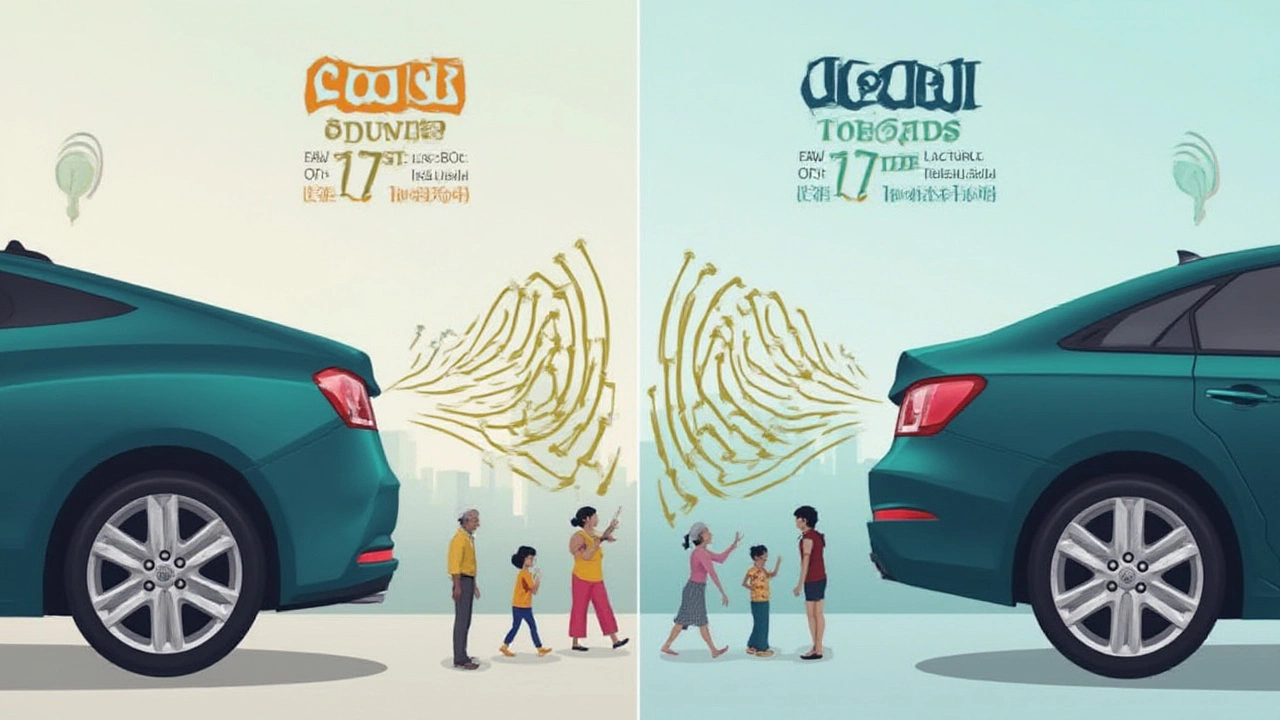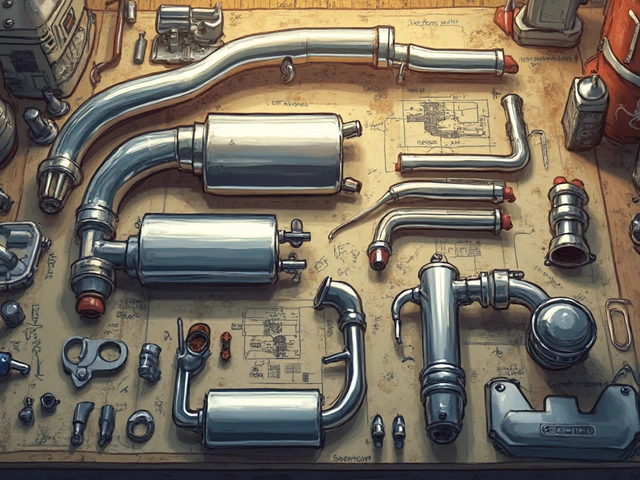Blasting down the highway with nothing but a straight pipe hooked up sounds pretty badass, right? The car roars, heads turn, and you get that raw engine note that mufflers just smother. But try this in a crowded city and you’ll find yourself getting pulled over faster than you can say "noise violation." Most people don’t know exactly why straight pipes get such a bad rap—or why they’re actually illegal in much of the world, not just your local neighborhood. It’s not just about being too loud or ticking off the neighbors (although let’s be real, that’s a big part). There’s a lot more to it, involving federal laws, pollution regulations, cold hard statistics, and health concerns most drivers don’t even think about. Still, those wild exhaust sounds aren’t going away, so let’s get into the rumble behind the rules.
What Is a Straight Pipe Exhaust—and Why Do People Love Them?
Straight pipe exhausts are exactly what they sound like—an unbroken pipe that runs straight from the engine’s exhaust manifold all the way out the back of your car. No muffler. No catalytic converter. Just metal tubing and pure, raw engine noise. It’s the exhaust you’ll see on track-only race cars and, sometimes, the wild street builds that pop up on YouTube. But why do people want them?
The answer is all about performance and sound. Without the usual restrictions—mufflers dampening noise, catalytics scrubbing emissions—a straight pipe cuts backpressure, which can help engines breathe out exhaust gases faster. That "free-flow" sometimes translates into better throttle response and the illusion (or, in some engines, a touch) of more horsepower. For gearheads who live for the rev and like to put a personal stamp on their cars, nothing gives that primal "I’ve arrived" entrance quite like a straight-piped exhaust. And let’s not lie: it just sounds cool. That angry burble or full-on howl gets a lot of attention. But all this fun comes at a price—legally, socially, and environmentally.
Here’s the twist. With sound comes chaos. A stock muffler can drop decibel output by 10-20 dB, but a straight pipe brings things to rock concert levels—over 110 dB at full throttle. For comparison’s sake, OSHA considers noise above 85 dB over extended periods as potentially damaging to hearing. Now imagine that shaking the windows of Main Street at 2 a.m. Not exactly popular with the locals, right?
Apart from the noise, there’s the emissions problem. Straight pipes skip past catalytic converters, which are there to deal with dangerous pollutants like carbon monoxide, nitrogen oxides, and unburned hydrocarbons. By removing these, a straight piped car can pump out roughly 20 times more pollutants than a standard car, based on EPA test data. California—the strictest state when it comes to car laws—even requires smog checks for modified exhaust systems, and fines can skyrocket to over $1,000 for repeat offenders. Many people don’t realize it, but a legal exhaust isn’t just about volume; it’s about what’s coming out of those pipes.

The Real Reasons Straight Pipe Exhausts Are Illegal
So, why are straight pipes specifically targeted by law? Most countries have rules set at the federal (or national) level, then stricter ones at state or city levels. It’s a dance between keeping things fun for enthusiasts and making sure the general public isn't exposed to dangerous noise or toxic fumes.
Straight pipe exhaust falls foul of two major legal areas: noise and emissions. Here’s how the rules actually work:
- Noise Regulations: In the U.S., federal law doesn’t set a universal decibel limit for civilian cars, but most states do. For example, New York recently boosted fines for loud exhausts up to $1,000 as part of the SLEEP Act (2021). California caps exhaust noise at 95 dB for most vehicles, measured at 50 feet away. Anything over is an instant ticket.
- Emissions Laws: Pretty much every state (and most countries) bans the removal of emissions equipment like catalytic converters. The Environmental Protection Agency (EPA) has the "Clean Air Act" dating back to 1970, making it literally illegal to tamper with a vehicle’s emission control system. For reference, removing a cat can shoot up emissions of carbon monoxide from a few grams per mile to 70+ grams, based on the EPA's Mobile Source Compliance Report from 2022.
- Safety Standards: Exhausts do more than mute noise and clean fumes. They also direct poisonous gases away from the cabin. A straight pipe can create backdrafts, pulling exhaust back inside the vehicle, especially at low speeds or when idling with windows open—causing headaches, dizziness, or worse.
The laws aren’t just for the sake of being strict. The World Health Organization says chronic exposure to noise above 70 dB increases your risk for high blood pressure, sleep disturbance, and even heart disease. Add on the pollution, and now it’s a public health issue, not just an annoyance.
Here’s a table showing some of the U.S. state exhaust noise limits for typical passenger vehicles (as of 2024):
| State | Max dB Limit | Fine |
|---|---|---|
| California | 95 dB | $200-$1,000 |
| New York | 95 dB | Up to $1,000 |
| Texas | No specific limit* | $200+ |
| Florida | 90 dB | $114 |
| Illinois | 96 dB | $75-$500 |
*Texas law bans “excessive or unusual noise” but doesn’t state a number. It’s up to officer discretion.
On the emissions side, things get even more serious. If you’re caught without a catalytic converter in any state, expect a failed smog inspection and potentially a mandatory fix. In extreme cases (like California’s BAR program), vehicles with illegal exhausts can be ordered off the road until restored to compliance. No wiggle room if you daily your straight piped monster.
Law enforcement knows the look—and the sound—of a straight pipe. With automatic noise camera pilots popping up in big cities across the U.S., tickets can now be issued by mail, based on microphone and video evidence. London has similar setups, and Australia uses roadside pollution sensors to sniff out offenders.

What You Can Do Instead: Tips for Legal (but Fun) Exhaust Mods
So if straight pipes are basically a no-go, where does that leave car lovers who crave more sound and style without ending up in court? Good news: You can still mod your car, just play smart within the law.
First, check your state or city’s decibel limits. Some places allow you to swap mufflers or install performance exhausts, as long as they’re certified by the Department of Transportation or carry a CARB EO (Executive Order) number in California. Look for cat-back systems—they replace everything from the catalytic converter back to the tip, while keeping emission controls untouched. Popular brands like Borla, MagnaFlow, and Flowmaster sell street-legal exhausts that sound deep but keep you out of trouble.
If noise is your goal, try these tips:
- Resonator delete: Removing the resonator gives a louder, slightly raspier note but isn’t as harsh as a full straight pipe. Test if your car stays under the legal dB cap before cutting.
- High-flow mufflers: Aftermarket mufflers are built to maximize flow and tune sound. Some have adjustable baffles so you pick how loud or quiet you want it. Just avoid "glasspacks" unless you want a race car-level scream.
- Exhaust tips: Larger tips can slightly amplify tone and style. Won’t break any laws but still gives you a little touch.
- Check for DOT or EPA approval: Always use certified parts, especially for cats and mufflers, so you pass inspections.
Looking for more performance? Focus on air intake upgrades, ECU tuning, and other bolt-ons that don’t break noise or smog rules.
Some shops even offer "valved" exhausts: push a button, and they open up for more sound when you want it and shut off when you need to be sneaky. Just make sure the "quiet" mode meets legal noise levels and emissions at all times. Illegal mods can void warranties, get insurance claims denied, and might even land you in court for repeat offenses.
If you’re ever unsure, ask your local exhaust shop for advice—good ones know the law right down to the code number. Never hack out your catalytic converter or go for a full straight pipe unless it’s a dedicated track car (and you trailer it to events). Street use is an open invite for tickets.
The weird thing is, while straight pipes headline most car forums and social threads, the real fun is in finding that sweet spot between a legally loud, healthy-sounding car and the ultimate forbidden fruit. Hearing is believing, but freedom sometimes means knowing when to dial it back.




